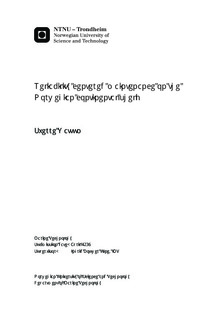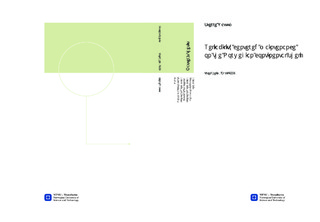| dc.description.abstract | The main objective of this thesis is to unveil the challenges of RCM as an analysis method for assets on the Norwegian continental shelf. A mixed research method have been used, also known as a semi-quantitative method, with gathering of both quantitative and qualitative data from RCM facilitators with relevant experience. A secondary goal with this thesis has been to develop a systematic approach to those who participate in RCM processes, to evaluate their own processes and RCM tools towards applicable standards to generate increased awareness.The primary motivation for maintenance on the Norwegian continental shelf is risk centered, rather than reliability centered. Nevertheless, it is called for RCM, but not all the capacities of RCM to ensure reliability are utilized. There were found several reasons for why this is so.RCM is by many viewed as a resource consuming method. This have led to many attempts in streamlining the process, which often entails crosscuts that threatens the quality of the analysis.Another reason is the lack of data to perform mathematical and statistical evaluations, which implies that nearly all decisions made in the analysis are based on qualitative experiences rather than neutral data. This is a challenge which is hard to overcome when maintenance concepts, assets and processes to analyze are dynamic and will always be subject for change. That should be a good reason for performing living programs, so that the analysis keep track with the changes. However, this is not the case, which means that data will not be gathered either. There is simply no culture for taking use of mathematical and statistical formulae in order to optimize maintenance.RCM depends to a large degree on the humans performing the analysis. This involves personal knowledge of the RCM methodology, software skills, insight and understanding of the assets and systems under review, and an ability to cooperate in a group while carrying out the analysis.The large tag structures on the Norwegian continental shelf that are analyzed with RCM are complex structures that are challenging to keep overview of when performing the analysis. With such large tag structure, it is hard to take notice if an item has changed its identification because such changes are not necessarily updated with the RCM software. This puts the analysis in risk of omitting certain items for the analysis. Also, it is hard to estimate how long it will take to perform an analysis for large tag structures.A method for self-evaluation of RCM processes have been developed for RCM participants in order to ensure increased awareness on important aspects of the RCM methodology and software in use.The work from this thesis can be continued by testing out the survey which has been developed, in order to make this a tool for RCM participants to increase awareness in the processes and the tools they use when performing the analyses.Research could be done within the standardization of methods and criterions for execution of RCM analysis.Future attention should be put on how one can collect data from maintenance for use in mathematical and statistical formulae to ensure living programs for RCM analyses. | nb_NO |

